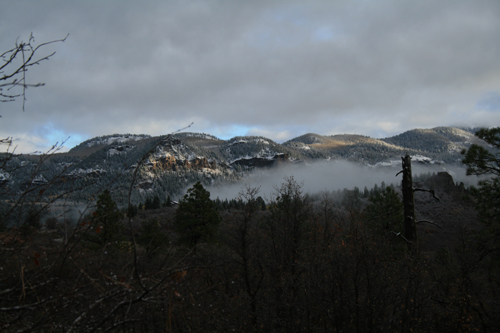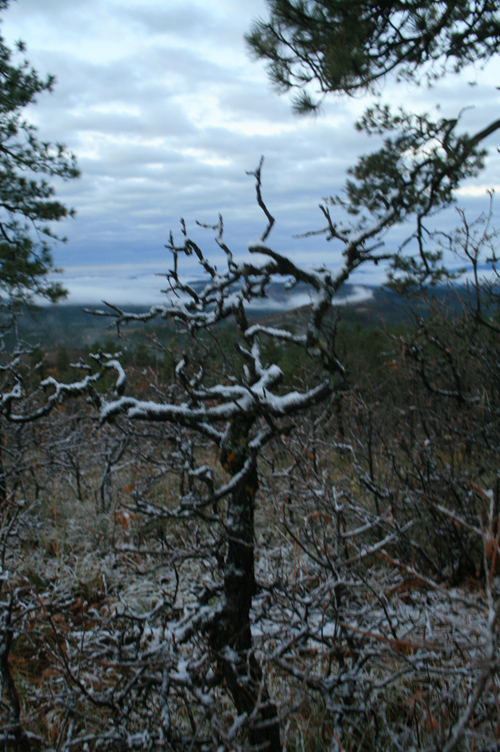It Could Happen To You – Outdoor Adventure in Pagosa Springs

Okay. This may be a sneaky way to get your attention but now that you are here … it could happen to you.
It is getting late in the season but the snow has not yet fallen to the lowest elevations so you head out for a backpack trip that requires only a two mile hike. As could happen any time of the year, a light drizzle begins to fall. You’ve grown a bit lax the last part of the summer and you fall behind on the trail behind your partner who is ahead. The rain’s chill begins to penetrate your clothing, but you don’t stop to put on rain gear for fear that you will fall further behind.
You stumble, almost falling to the ground. You think about taking a break, eating a snack and putting on your rain coat but you are worried your partner is waiting up ahead. You press on. Your water bottle goes unused.
The lake comes into view and the pitter patter of rain drops falls on the lake with an enlarging rippling effect. You try to help with the tent but your hands don’t seem to work right. Your partner encourages you to put on your rain coat and you fumble getting your gear out of your pack. You finally get your jacket on but then you can’t seem to get the jacket zipped. You’ve begun to shiver. Once the tent is up your partner tells you to crawl into your sleeping bag but you don’t listen. You sit and stare through your shivers at the yellow home that is your protection from the rain.
HYPOTHERMIA is when the body loses heat to the environment faster than it can produce heat and the body’s core temperature starts to drop.
Mitigate your risks with adequate hydration and food intake and fatigue – all common ingredients in a wilderness trip. Food and water are the fuels that are burned to maintain the body’s basal metabolic rate (BMR). In simplified terms, how the body maintains an adequate core temperature.
Symptoms are a case of the “umbles.” Fumbles, grumbles, stumbles and mumbles. Or, my favorite, “mild stupidity.” The making of poor decisions, a sense of apathy.
Treatment is to change the environment from cold and wet to warm and dry. Immediately replace damp clothing with dry clothing. Add extra insulation under and around the victim. Add a windproof/waterproof layer or get into shelter. Stoke the inner fire of the victim with simple carbohydrates (like chocolate) and warm, sweet liquids (like Jello).
Severe hypothermia is an entirely different scenario but the initial treatment is the same. The best plan of action though is to keep eating, drinking and changing your layers throughout a hike. It is better to stop and start with removing of clothing layers to be comfortable than it is to be in a dangerous situation from a “push on” pace.
Be safe when you step out. Practice the Leave No Trace principle of Plan Ahead and Prepare to minimize the risks to your safety. We like see you out there!
About Step Outdoors, LLC
Step Outdoors wants you to go outside and we lead individually inspired one foot in front of the other adventure pursuits to get you there. In the summer, we will tailor a first time
overnight backpack or a more challenging multi-day hiking adventure just for you. In the winter, we offer snowshoe hikes appropriate for beginners and for those with a tad more experience. Perfect for mothers and daughters, couples, families, co-workers or a group of friends, we provide a 100% guarantee of fun.
Check out our blog at http://stepoutdoorscolorado.com/blog/. Or send us an email at info@stepoutdoorscolorado.com.



